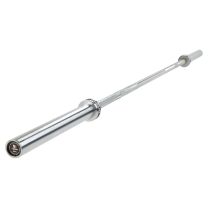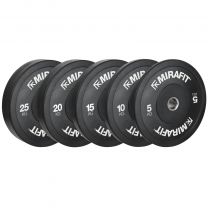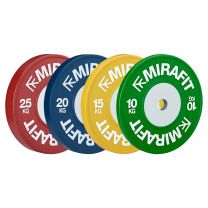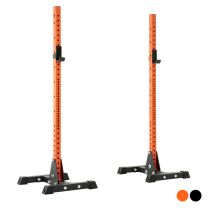Front Squats vs Back Squats
Front Squats vs Back Squats

It’d be hard to find a well-rounded training programme that doesn’t include a heavy squatting variation, with many considering barbell squat variations as ‘gold standard’ measures of strength. However, even the barbell squat can be split into different variations, with the two most popular being the barbell back squat and the barbell front squat.
The unique benefits of Barbell squatting with Squat Rack is that you can lift more weight than other variations because you are not limited by your ability to 1) lift the weight up off the floor and 2) the upper body strength requirement to hold the weight throughout the lift.
What is the Difference Between a Front Squat and a Back Squat?

A back squat places the barbell across the rear delts and traps (posterior rack position) and the front squat places it across the top of the front delts (anterior rack position). During any squat variation, the aim is to maintain the weight (in this case, the barbell) over the top of our centre of mass. With different rack positions, anterior or posterior, the body is forced to move differently across key joints to achieve this.
The anterior load becomes more knee-dominant, using the quads more, and the posterior load becomes more hip-dominant, using the glutes more.
What Type of Squat Should I Do?
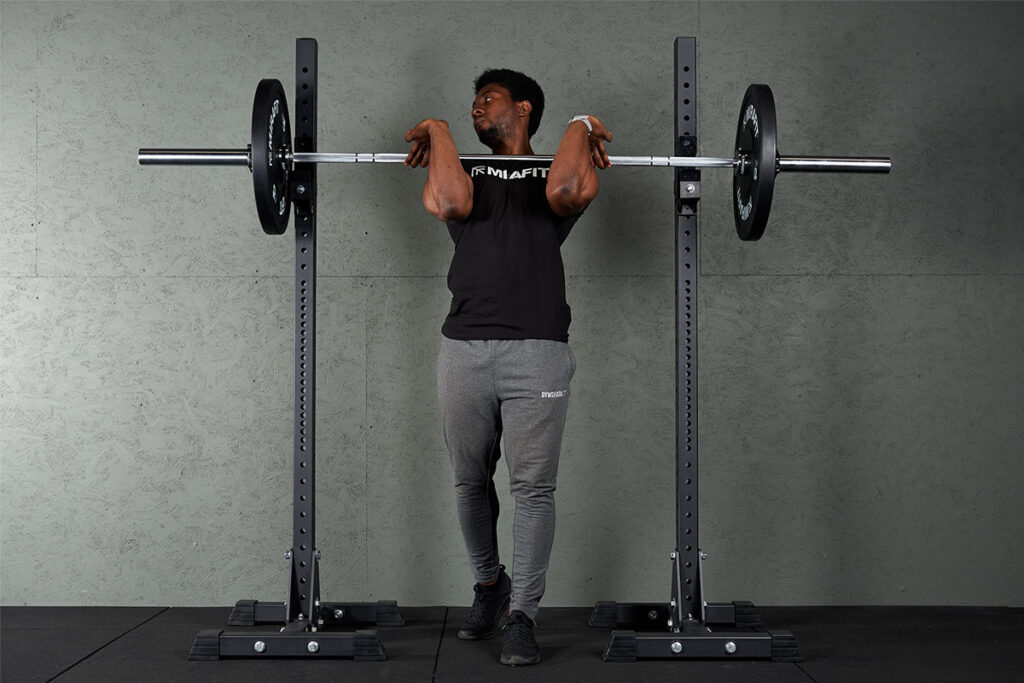
It depends on your goals. However, using both would certainly be beneficial. Strong quads and strong glutes are beneficial for almost everything. If you are an Olympic lifter, you might put a particular emphasis on front squats because of your sporting requirements, if you are a powerlifter, you may put an emphasis on back squats for the same reason. For everyone else, our general advice is to do both with a balanced emphasis between the two. Find out more about front squat benefits.
Mobility Requirements for a Deep Squat

All deep squats, regardless of the variation, require good mobility around the hips and at the ankles. However, the front squat often presents an issue due to the extreme upper body mobility requirements needed to get into a proper rack position: the arm needs to be raised up and out while also rotating the palm to the sky. Typically, poor lat flexibility plays a role in those that struggle with this. If this is you, employing lat stretches can help, for instance, the ‘thread the needle’ stretch.
Some people may still struggle to hit a good front rack position, but do not fear, you can still squat with a barbell…
How to Front Squat if you Have Poor Upper Body Mobility

It is important that we don’t allow poor upper body mobility to limit us from doing so. So, if you are strong enough that you need the extra load made possible by a barbell squat, but your mobility does not allow it, don’t completely regress the movement, but instead modify the front squat so that you can continue to lift heavy and make gains. This is where we can use a ‘cross arm front rack position’.
Cross Arm Front Squat
• Secure the barbell across the front of your shoulders, while still on the squat rack, with the bar resting across the front of your neck and your arms out in front. Imagine doing a bodybuilding ‘lat spread’ to protract your shoulders blades and get your shoulders in a favorable position to create a big platform for the bar.
• Cross your hands to the opposite shoulder to secure the barbell, keeping your elbows as high as possible to maintain your rack position.
• Step up and away from the squat rack and front squat as normal, keeping your elbows as high as possible throughout.
Barbell squat variations are a fantastic opportunity to continue to get stronger once you can no longer progress your leg strength using handheld squat variations, like the dumbbell goblet squat. So, grab yourself a squat rack and a barbell and get squatting. Don’t let your mobility get in the way, simply adjust the movement to suit you while you also work on your weaknesses.
Exercises are always new at some point, so embrace this feeling for it is how we learn and get better!
You can read our complete guide to squat racks here
Written by guest author Ewan Hammond.
For more content, follow us on Instagram, YouTube, TikTok, and on our official Mirafit Facebook page.
Enter your email to signup to our newsletter
Tags: Equipment > Power Racks and Cages ; Equipment > Squat Racks ; Exercise Type > Strength

